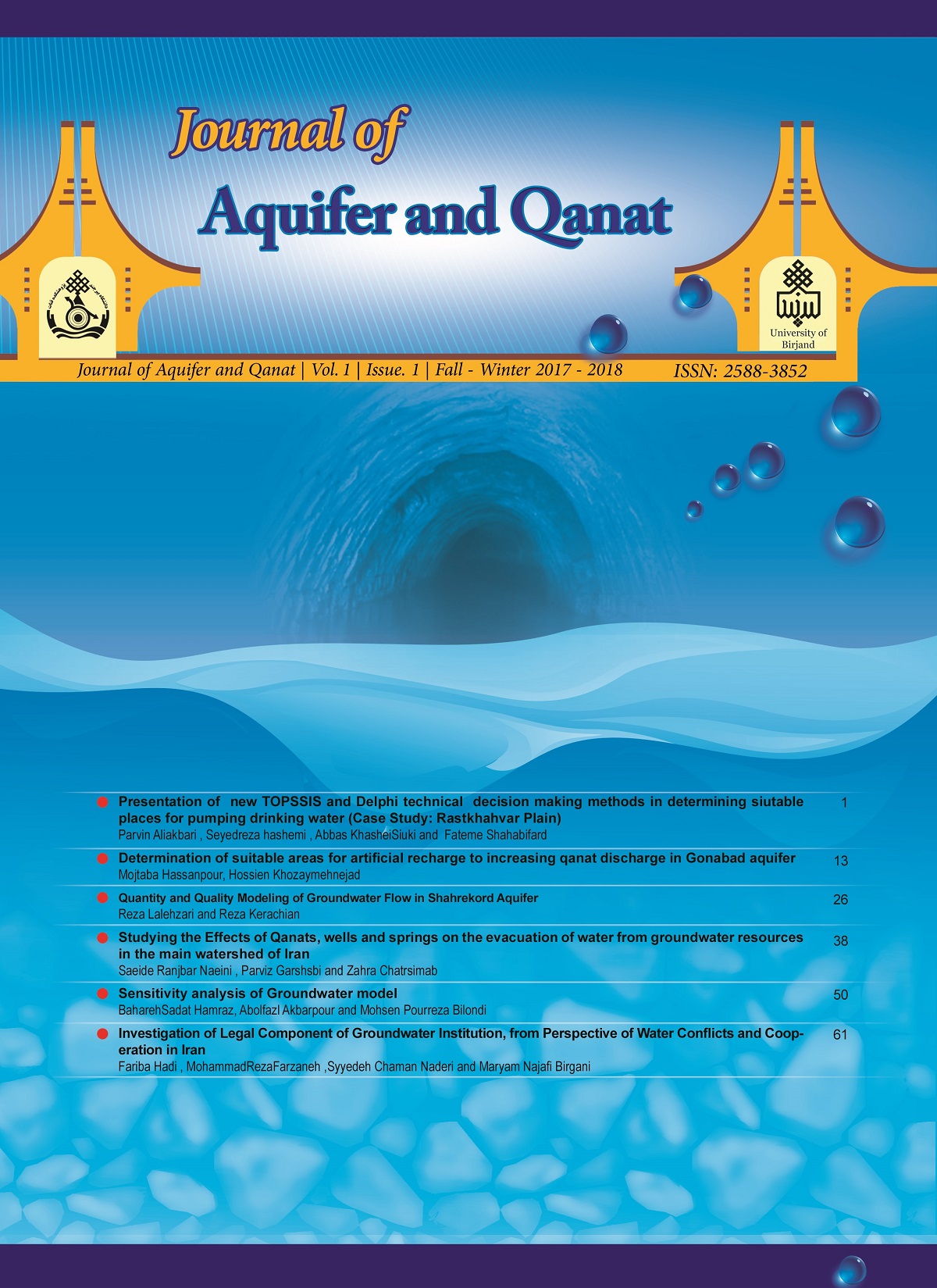Authors
1 MSC. Water resources engineering, University of Birjand
2 Assistant Professor of Scinces andWater Engineering Dept. of, University of Birjand
3 Associate Professor of Scinces andWater Engineering Dept. of, University of Birjand
4 HydrogeologyMSc, Regional Water Company
Abstract
Decreases of the qulity of ground waters is due to wasteful harvest of this water resource, which needs to identify the suitable places for ground water extraction for drink pourposes. The aim of current research was to identify the suitable places for ground water extraction in Roshtkhar plain using the Delphi and Topsis methods. In Delphi method the weight of criterias and sub- criterias, and multiplied in their raster layers and therefore the final map was extracted. In Topsis method by using decision-making matrix, the sub inderces were specified and then by ranking the selected sub-criterias carried out. Criterias included water, catchment physiography, geology, economic and social criterion, and sub-criterias included the quality and quantity of water, transmission coefficient, alluvium thickness, distance from the road, distance from power transmission lines, distance from the city and villages, slope of basin and geological formations of the region. The result of comparison of two methods showed that there is no meaningful different in result in the present areas, because the calculated Chi-Square ( 12χ2"> ) was 97.5 which is lower than the Chi of table. So by taking attention to the final map of Roshtkhar plain aquifer, the aptitude of aquifer was classified in five classes included very good, good, average, weak and non-suitable. In Delphi method, the 37.07 percent of area was very good and good, and in Topsis method the 35.27 percent of area which placed in the west of plain were good and very good and in the weast of aquifer has non-suitable extraction situation.
Keywords

